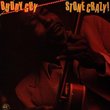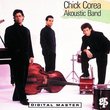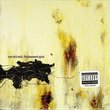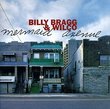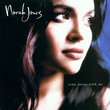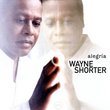| All Artists: Saariaho, Kronos Quartet Title: Du Cristal a La Fumee Members Wishing: 1 Total Copies: 0 Label: Ondine Release Date: 2/1/1995 Genres: Special Interest, Classical Styles: Chamber Music, Historical Periods, Classical (c.1770-1830), Modern, 20th, & 21st Century, Symphonies Number of Discs: 1 SwapaCD Credits: 1 UPCs: 761195080429, 6413657780425 |
Search - Saariaho, Kronos Quartet :: Du Cristal a La Fumee
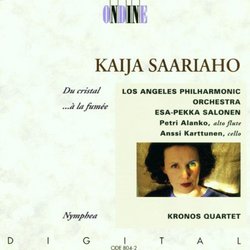 | Saariaho, Kronos Quartet Du Cristal a La Fumee Genres: Special Interest, Classical
|
Larger Image |
CD DetailsSimilarly Requested CDs
|
CD ReviewsFrom crystal into smoke... R. Hutchinson | a world ruled by fossil fuels and fossil minds | 11/07/2002 (4 out of 5 stars) "Though Saariaho studied computer composition technology at Boulez's IRCAM, her music sounds more like Ligeti than Boulez. In fact "Du cristal" sounds quite a bit like "Atmospheres," a static piece of shifting, dissonant chords. Rolling, pounding tympani and bells give it a richer texture than Ligeti's sparse and eerie works from the early 1960s. The monolithic blocks of sound and crescendos also reflect the rough-hewn aesthetic of Xenakis. The second part of the diptych, "...a la fumee," is the high point of this disc -- flute and cello emerge from the crystalline structure and weave an enchanting labyrinth. The last piece, "Nymphea," is a string quartet with electronics, commissioned by and performed by the Kronos Quartet. Compared with the version recorded a couple of years later by the Arditti Quartet (on FROM SCANDINAVIA on the Montaigne label -- see my review), this is a brash, "rock" reading. I prefer the AQ's subtlety, perhaps because I heard it first. This music of Saariaho furthers the uncompromising vision of the post-war avant-garde, with no concessions to the past. Saariaho clearly has a strong foundation here on which to build a more distinctive voice, and "...a la fumee" especially reveals fantastic potential. UPDATE) Ondine has reissued this disc, and the new version adds a cello solo -- see my 6/22/05 review of the new version. Also see my FINNISH COMPOSERS OF MY GENERATION for more Saariaho recordings and reviews. The list also features Magnus Lindberg." A fine disc, but a recent reissue adds a gloriously lovely p Christopher Culver | 10/15/2005 (5 out of 5 stars) "The several pieces by Kaija Saariaho on this Ondine disc were written mainly in the early 1990s, when she was still concerned with timbre--recent Saariaho is more melodically inclined, with disappointing results. Each is performed by an all-star lineup, with Salonen leading the Los Angeles Philharmonic on the two orchestral pieces and Kronos Quartet on "Nymphea". Note that this material is also available in a reissue that adds Finnish cellist Anssi Kartunnen performing "Sept Papillions" (just one of the several works Saariaho wrote with him in mind).
"Du cristal" (1990) and "...a la fumee" (1991) for orchestra were Saariaho's first creation for large ensemble and, as their titles suggest, are closely related. In the first piece, the orchestra works mainly in unison in creating crescendos and diminuendos of great proportions, while percussion bubbles on the surface. The last sound of "Du cristal" is a cello trill played sul ponticello, which becomes the first sound of "...a la fumee". In this second work, the addition of two soloists--flute and cello--and live electronics disrupts the uniformity of sound, resulting in the "smoke" of the title. While the first piece is especially reminiscent of Ligeti's "Atmospheres", the richness of harmony can be closely compared to the style Magnus Lindberg was discovering around the same time, but less kinetic and slower-moving. "Nymphea" for string quartet and electronics (1987) was written for the Kronos Quartet and is an example of early Saariaho. While the quartet performs, electronics are used to broaden the sounds mere moral instrumentalists are capable of, and contrasts, as the composer explains, "limpid, delicate textures with violent, shattering masses of sound." This is by far the most avant-garde piece on the disc, but I find I get more and more out of it as I learn about the use of electronics in contemporary music. Th reissue of this CD--with the heartbreakingly beautiful "Sept Papillions" was the first exposure I had to Saariaho's work, and it was so pleasantly shocking that I immediately went out and bought everything else available." |

 Track Listings (3) - Disc #1
Track Listings (3) - Disc #1
